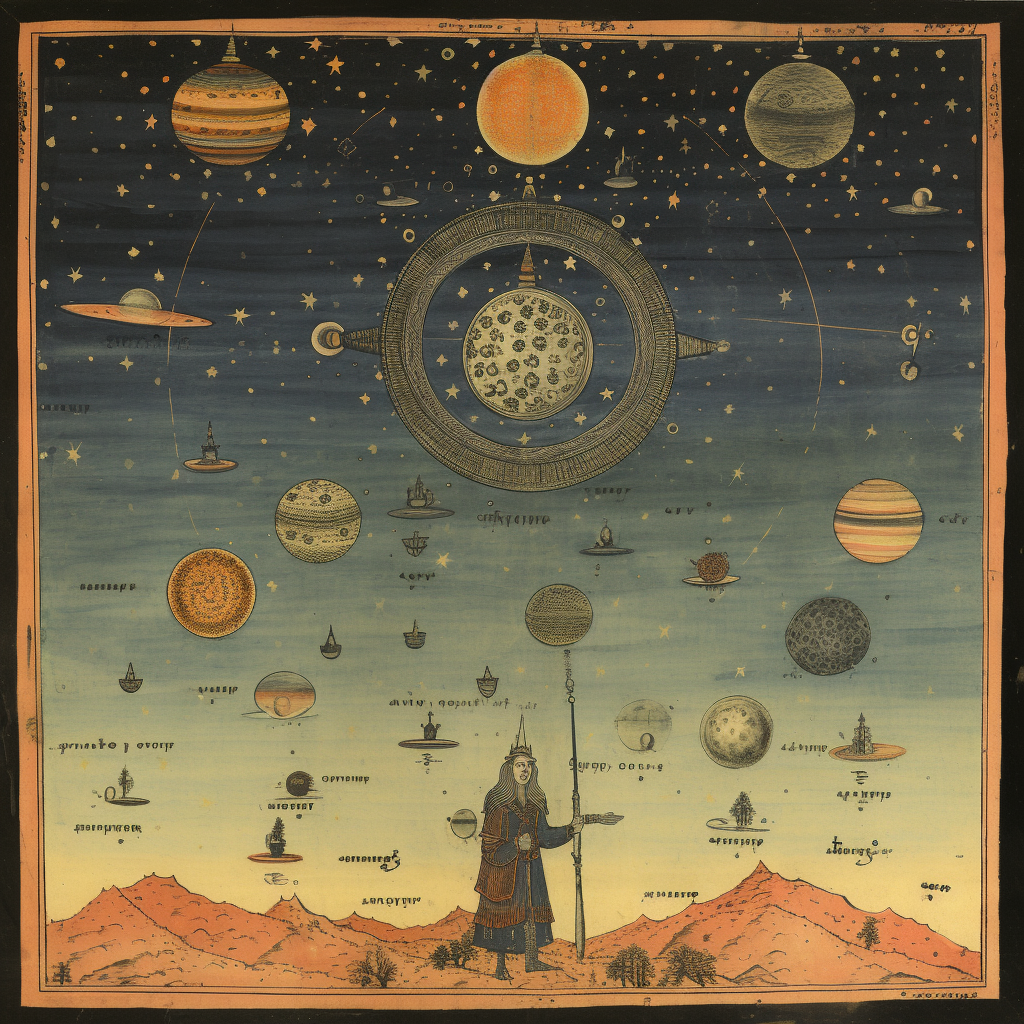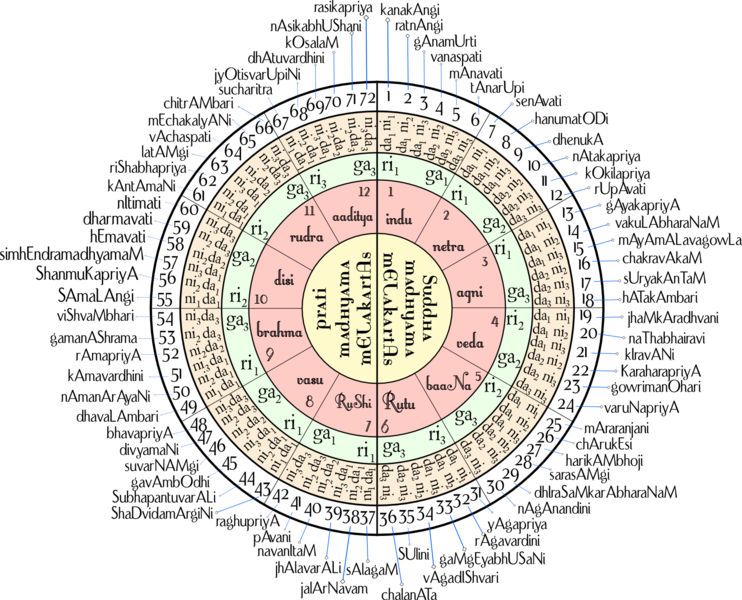A Proposed Correspondence Between the Planets and the Eight Diseases of the Mind from Ayurveda9/20/2023 Chapter 1, Verse 1 of Vagbhata's "Ashtanga Hridayam" is gorgeous, often being the favorite melody of my Sanskrit students.
Devanagari Script: रागादि रोगान् सततानु सक्तान् असेष काय प्रसृतान सेशान्। औत्सुक्य मोहारति दाञ्जघान योऽपूर्व वैद्याय नमोऽस्तु तस्मै॥ IAST Transliteration: rāgādi rogān satatānu saktān aśeṣa kāya prasṛtāna seśān, autsukya mohārati dāñjaghāna yo'pūrva vaidyāya namo'stu tasmai. Translation: I offer my salutations to that ancient physician (Vaidya) who destroyed various diseases like passion (Rāga) and others, who healed countless bodies, and who eradicated the diseases of mind and others that come from it. Let's delve into the translation with some etymological elaboration: "Rāgādi Rogān": Rāgādi: "Rāga" refers to passion. The suffix "-ādi" indicates "and others" or "et cetera." Rogān: "Roga" means disease or affliction. The plural form "Rogān" refers to diseases in general. So, "Rāgādi Rogān" collectively refers to various diseases all of which stem from passions. "Satatānu saktān": Satatānu: "Satat" means constant or continuous, and "anu" means after. So, "Satatānu" implies someone who consistently follows or eradicates. Saktān: "sakta" means attached or bound. In this context, "Satatānu saktān" can be understood as "constantly eradicating passion and diseases that arise from it." "Aseṣa Kāya Prasṛtāna Seśān": Aśeṣa: "Aśeṣa" means countless or innumerable. Kāya: "Kāya" translates to bodies. Prasṛtāna: "Prasṛtāna" suggests extending or prolonging. śeśān: "śeśān" refers to remnants or remnants of afflictions. So, "Aśeṣa Kāya Prasṛtāna Seśān" signifies extending the lives of countless bodies and eliminating the remnants of afflictions. "Autsukya Mohārati Dāñjaghāna": Autsukya: "Autsukya" means eagerness or desire, like in anxiety. Moha: "Moha" represents delusion or confusion. Arati: "Arati" indicates the destroyer or vanquisher. Dāñjaghāna: "Dāñjaghāna" refers to the eradicator of afflictions. Thus, "Autsukya Mohārati Dāñjaghāna" signifies the eradication of anxiety and the destruction of delusion. "Yo'pūrva Vaidyāya Namo'stu Tasmai": Yo: "Yo" means who. Apūrva: "Apūrva" means ancient or preeminent. Vaidyāya: "Vaidya" is a physician or healer. Namo'stu: "Namo'stu" is an expression of reverence or salutation. Tasmai: "Tasmai" means to him. In summary, "Yo'pūrva Vaidyāya Namo'stu Tasmai" expresses respect and homage to that ancient physician who possesses unparalleled healing abilities (namely Dhanvantari). So, the verse essentially acknowledges and pays homage to an ancient healer who tirelessly eradicated various diseases, including those arising from attachment and desire, extended the lives of countless individuals, and dispelled afflictions like anxiety and delusion. Believe it or not, I think a lot can be said just about the first word. In Vasant Lad's translation, the eight diseases of the mind in Ayurveda can be understood to only just begin with rāga or passion. The others are kāma (lust as in The Kama Sutras), krodha (anger), lobha (greed), mada (arrogance), matsara (jealousy), dveśa (aversion or hatred), and bhaya (fear). I have a very simple proposal: that these eight problematic states of mind correspond to the eight graha (sans Ketu -- sensical because Ketu has no head; thanks, Alicia!). rāga (passion of the mind) :: Moon kāma (lust) :: Venus krodha (anger) :: Mars lobha (greed) :: Rahu mada (arrogance) :: Sun (and insanity as a whole is called unmada, meaning to rise up in arrogance, interestingly) matsara (jealousy) :: Jupiter dveśa (hatred/aversion) :: Mercury (because it comes from duality) bhaya (fear) :: Saturn It is interesting and important too that disease in general is what is eradicated by the ultimate vaidya physician and that all of them emerge from the mind (Moon). Just like we in the contemporary West speak of "crimes of passion" with the problem not actually the passion but the crimes that stem from it, so too rāga is a complex word, and the most serious of spiritual problems, namely mind-body health problems, are what arise from it.
0 Comments
When I first read the Bhagavad Gita, I was charmed and intrigued by the nicknames of Arjuna, the great everyday hero of the tale who represents nothing less than what it is to be human and reckon with one's true dharma. Wikipedia summarizes the etymology and epithets of Arjuna. A Quora post on it is here. I was delighted to see these names, my friends, all in one place. This list also got me thinking. It reminded me of Katapayadi, Ka·ṭa·pa·yā·di is an ancient cryptographic method used to embed extra layers of meaning in texts. Here is my calculator that uses this method to decrypt Sanskrit text into Jyotishical meaning. Upon applying the calculator to the twelve names of Arjuna, I was amazed but not surprised to see that they map on to the twelve signs of the zodiac. (You can use this dictionary to obtain the proper protocol for inputting the names into the calculator. ) The following is the name, the meaning, and the sign for each of the appellations as re-ordered to the proper sequence in the sky. What I do not know off the top of my head is whether the order of appearance of the names in the Gita is in this sequence. I will look this up and comment below if I find this to be true. Parantapa – one who concentrates the most, destroyer of enemies. ARIES Shvethavāhana – one with milky white horses mounted to his pure white chariot. TAURUS Shyamal - one who brings greenary, prosperous, beautiful environment and good nature to the region where ever he goes. GEMINI Vijaya – always victorious, invincible and undefeatable. CANCER Gāndīvadhanvan – one who possessed the mighty bow named Gandiva which was created by Lord Brahma. LEO Phalguna – born under the star Uttara Phalguni This star is in VIRGO. Savyasāchi – ambidextrous, only Arjuna was expert in using both hands equally in archery. LIBRA The word Arjuna itself means "white", "clear", "shining" and "silver". SCORPIO [The connection between meaning and sign here may refer to alchemy as a Scorpionic 8th house expression as connected to the physical qualities of alchemy's metallic rasayanas. I also think that the name of Arjuna as Scorpio is reminiscent of the first verse of the Tao Te Ching that is variously translated with my favorite one saying "darkness within darkness, the gateway to all mystery". In a sense, Arjuna's plight is a darkness and his humanity in that plight may be the darkness within darkness. His journey, if we ourselves can follow it, may be the gateway that opens the door to all mystery. Also, mystery is an eighth house indication in Jyotish.] Mahabahu - the one with extraordinary biceps, a perfect nickname for the archer. SAGITTARIUS Jishnu – triumphant. CAPRICORN Bībhatsu – one who always fights wars in a fair, stylish and terrific manner. AQUARIUS Anagha - the one with pure soul. PISCES As you can see the meaning of the name goes well with the tantric meaning of the Katapayadi-given sign for each of the twelve of them. So amazing! Offered through Ayurved Sadhana Vidyalaya for a group that is both online and in-person.
We are only a week into each. (They are separate courses.) There are full past recordings of each. See http://ayurvedsadhana.com/sanskrit-and-jyotish/ for more. EDIT: A free and improved online version of this program now is available here, on AyurAstro!
The following program runs in Windows. https://dl.dropboxusercontent.com/u/3220564/Katapayadi.exe Of course, there are exceptional characters (RSi syllables, etc.) to memorize. Some Jyotisha teachers have La be as la (3) and some raaga teachers have it be as 9. Be careful. This program is just a casual tool to help us students along a very non-casual path. Once again, be careful. Here is the source code in C++. All faults are mine. See this link for more info. And here is a pretty picture for you. EDIT: A free and improved online version of this program now is available here, on AyurAstro! From the cosmically esteemed, holy Shree Maa.
This has been said before (actually many times before) but it bears repeating here.
The speed of light is in the Rk Veda, and not hidden in metaphors either. In ManDalam 1, SUktam 50, the Vedas clearly say It is remembered, Salutations to Thee [the Sun], the traveler of 2,202 yojanas in half a nimisha. Yojana is a unit of distance, nimisha, a unit of time. If you do the calculation, it comes to approximately 185,000 miles per second. Compare that to the currently accepted value for the speed of light of 186,000. In fact the small difference could be accounted for by conversion error. This is from a text dated at least to 7,000 BCE. I think this is one of the coolest things I’ve learned ever. For a look at the original Sanskrit, see below. Pair this knowledge with the Yoga Suutra on the Sun, and you get the conduit to other worlds, just as physicists agree that the speed of light is essential to understanding other universes. from the dictionary:
2 veda 1 m. (fr. 1. %{vid} q.v.) knowledge , true or sacred knowledge or lore , knowledge of ritual RV. AitBr. ; N. of certain celebrated works which constitute the basis of the first period of the Hindu1 religion (these works were primarily three , viz. 1. the R2ig-veda , 2. the Yajur-veda [of which there are , however , two divisions see %{taittirIya-saMhitA} , %{vAjasaneyi-saMhitA}] , 3. the Sa1ma-veda [1015,2] ; these three works are sometimes called collectively %{trayI} , `” the triple Vidya1 “‘ or `” threefold knowledge “‘ , but the R2ig-veda is really the only original work of the three , and much the most ancient [the oldest of its hymns being assigned by some who rely on certain astronomical calculations to a period between 4000 and 2500 B.C. , before the settlement of the A1ryans in India ; and by others who adopt a different reckoning to a period between 1400 and 1000 B.C. , when the A1ryans had settled down in the Panja1b] ; subsequently a fourth Veda was added , called the Atharva-veda , which was probably not completely accepted till after Manu , as his law-book often speaks of the three Vedas-calling them %{trayam@brahma@sanAtanam} , `” the triple eternal Veda “‘ , but only once [xi , 33] mentions the revelation made to Atharvan and An3giras , without , however , calling it by the later name of Atharva-veda ; each of the four Vedas has two distinct parts , viz. 1. Mantra , i.e. words of prayer and adoration often addressed either to fire or to some form of the sun or to some form of the air , sky , wind &c. , and praying for health , wealth , long life , cattle , offspring , victory , and even forgiveness of sins , and 2. Bra1hman2a , consisting of Vidhi and Artha-va1da , i. e. directions for the detail of the ceremonies at which the Mantras were to be used and explanations of the legends &c. connected with the Mantras [see %{brAhmaNa} , %{vidhi}] , both these portions being termed %{zruti} , revelation orally communicated by the Deity , and heard but not composed or written down by men [cf. I. W. 24 &c.] , although it is certain that both Mantras and Bra1hman2as were compositions spread over a considerable period , much of the latter being comparatively modern ; as the Vedas are properly three , so the Mantras are properly of three forms , 1. R2ic , which are verses of praise in metre , and intended for loud recitation ; 2. Yajus , which are in prose , and intended for recitation in a lower tone at sacrifices ; 3. Sa1man , which are in metre , and intended for chanting at the Soma or Moon-plant ceremonies , the Mantras of the fourth or Atharva-veda having no special name ; but it must be borne in mind that the Yajur and Sa1ma-veda hymns , especially the latter , besides their own Mantras , borrow largely from the R2ig-veda ; the Yajur-veda and Sa1ma-veda being in fact not so much collections of prayers and hymns as special prayer- and hymn-books intended as manuals for the Adhvaryu and Udga1tr2i priests respectively [see %{yajur-veda} , %{sAma-veda}] ; the Atharva-veda , on the other hand , is , like the R2ig-veda , a real collection of original hymns mixed up with incantations , borrowing little from the R2ig and having no direct relation to sacrifices , but supposed by mere recitation to produce long life , to cure diseases , to effect the ruin of enemies &c. ; each of the four Vedas seems to have passed through numerous S3a1kha1s or schools , giving rise to various recensions of the text , though the R2ig-veda is only preserved in the S3a1kala recension , while a second recension , that of the Bha1shkalas , is only known by name ; a tradition makes Vya1sa the compiler and arranger of the Vedas in their present form: they each have an Index or Anukraman2i1 [q.v.] , the principal work of this kind being the general Index or Sarva7nukraman2i1 [q.v.] ; out of the Bra1hman2a portion of the Veda grew two other departments of Vedic literature , sometimes included under the general name Veda , viz. the strings of aphoristic rules , called Su1tras [q.v.] , and the mystical treatises on the nature of God and the relation of soul and matter , called Upanishad [q.v.] , which were appended to the A1ran2yakas [q.v.] , and became the real Veda of thinking Hindu1s , leading to the Dars3anas or systems of philosophy ; in the later literature the name of `” fifth Veda “‘ is accorded to the Itiha1sas or legendary epic poems and to the Pura1n2as , and certain secondary Vedas or Upa-vedas [q.v.] are enumerated ; the Veda7n3gas or works serving as limbs [for preserving the integrity] of the Veda are explained under %{vedA7Gga} below: the only other works included under the head of Veda being the Paris3isht2as , which supply rules for the ritual omitted in the Su1tras ; in the Br2ihad-a1ran2yaka Upanishad the Vedas are represented as the breathings of Brahma1 , while in some of the Pura1n2as the four Vedas are said to have issued out of the four mouths of the four-faced Brahma1 and in the Vishn2u-Pura1n2a the Veda and Vishn2u are identified) RTL. 7 &c. IW. 5 ; 24 &c. ; N. of the number `” four “‘ VarBr2S. [1015,3] Srutabh. ; feeling , perception S3Br. ; = %{vRtta} (v.l. %{vitta}) L. (cf. 2. %{veda}). 3 veda 2 m. (fr. 3. %{vid}) finding , obtaining , acquisition (see %{su-v-}) ; property , goods A1s3vGr2. 4 veda 3 m. (perhaps connected with 1. %{ve} , to weave or bind together) a tuft or bunch of strong grass (Kus3a or Mun5ja) made into a broom (and used for sweeping , making up the sacrificial fire &c. , in rites) AV. MS. Br. S3rS. Mn. 5 veda 4 m. N. of a pupil of A1yoda MBh. ; (%{A}) f. N. of a river VP We need to know this in order to understand Ayurveda and other words. The usual translation, “study of”, doesn’t suggest sincerely enough, that it is of KNOWLEDGE, of TRUTH, of LORE. In truth, Ayurveda is an upaveda, an ur-veda, and not part of the vedas themselves strictly speaking. I love the #4, broomset. This makes perfect sense after reading that sutra means to thread together. Sutra of the day: by sanyama [perfect regulation of thoughts] on the Sun, knowledge of the worlds5/18/2008
bhuvana jnaananam suurye sanyamaat (Yoga Sutras, III.26)
By sanyama [perfect regulation of thought via dharana, dhyana, and samadhi) on the sun, knowledge of the worlds. Ammachi, Karunamayi, even the Hymn to the Ganga refer to the three worlds. I think it’s interesting that by the Sun, one may have knowledge of these worlds. Not just our solar system. The “three worlds” makes sense from an advanced physics view, that there is one “brane” to the side of us, one that we are in, and one to the other side of us. I am also thinking of the Surya Siddhanta (“Abilities from the Sun”, a grand mathematical treatise on the solar system) but I think this sutra actually goes beyond that, from the world, to the three worlds (the bhuvana or the planes of existence). I like that word, bhuvana, coming from bhu – to be and -vana, a place to dwell, often used for forests. I have absolutely no cognitive experience of the three worlds and can’t comment further. kaaya ruupa sanyamaat tad graahya shakti stambhe caksuhuh prakaashamprayoge’ntardhaanam (Yoga Sutras, III, 21)
By sanyama (cessation of mindstuffs) on the form of the body, while suspending its ability to be seen – that is, the disconnecting of the light to the eye – there arises invisibility (placement within) Word has it that the Great Maharishi Mahesh Yogi would sometimes give this siddhi to select members of his meditation group in the early days of the movement. He stopped when it was apparent so to speak that the comrades of the dissapeared siddhas got upset. The technology inherent in this ancient sUtra is striking too in that the Western military is just catching up no candre taara-vyuuha-jnaanam ( Yoga Sutras, III.27)
On the moon – knowledge of the organization of the stars This one has everything to do with astrology obviously. I love this sutra’s clarity of construction and its fruits. Dharana, dhyaana, andsamadhi on the MOON gives you knowledge of the organization of the STARS. That is how the ancient seers knew such advanced astrology and highlights the importance of the Moon in it. (For example, the nakshatra (lunar mansion) of the Moon determines your starting place in the Vimshottari dasha system and much else.) Our next sutra related will be on how to have knowledge of the worlds. |
ARTICLESAuthorRenay Oshop - teacher, searcher, researcher, immerser, rejoicer, enjoying the interstices between Twitter, Facebook, and journals. Categories
All
Archives
September 2023
|
||||||
© 2008–2024 Renay Oshop AyurAstro®





 RSS Feed
RSS Feed